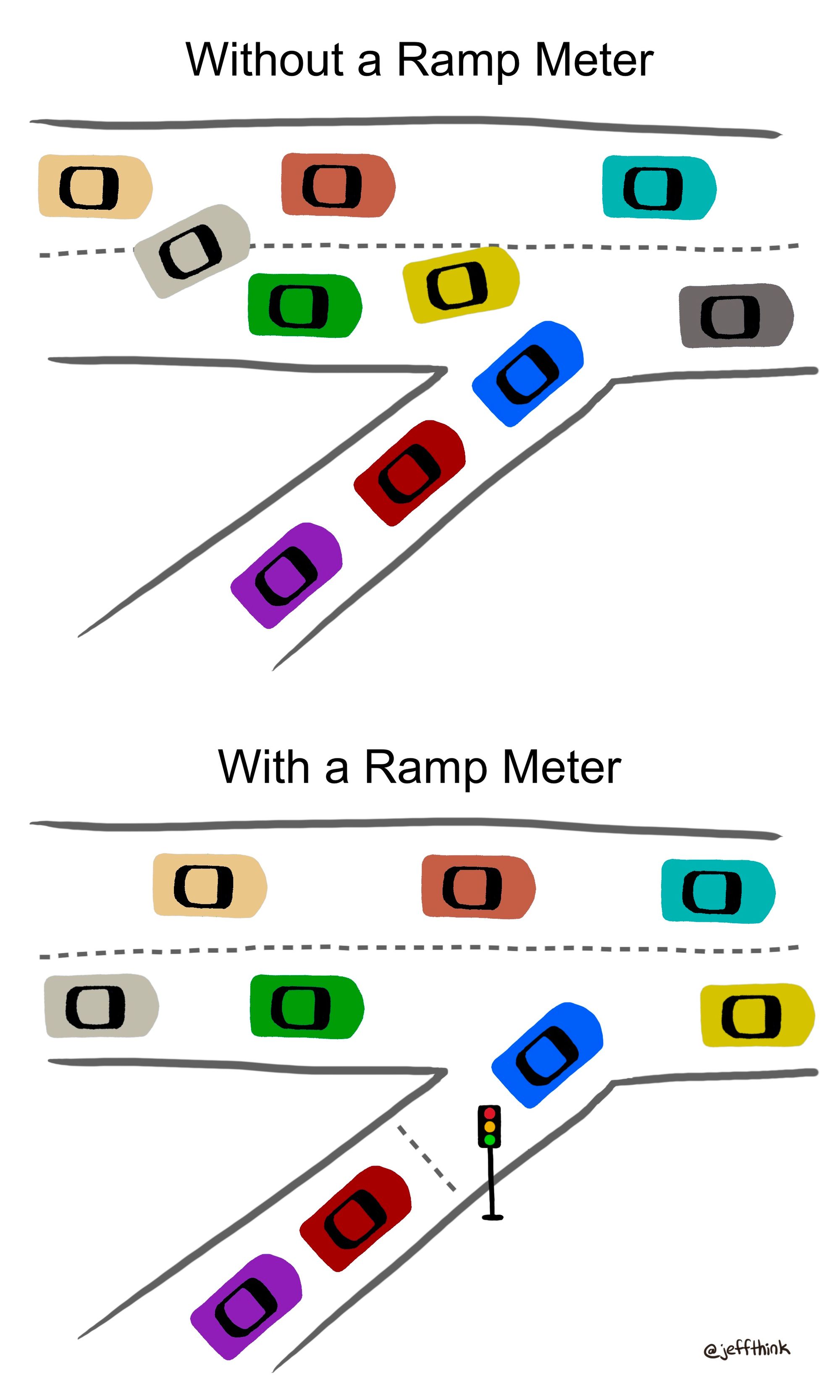The popular image of a highway involves beautiful cars, cruising at high speeds, and the freedom to take you anywhere you want to go. Yet the daily reality for many Americans — who spend 50 minutes on average commuting each day — is that of being trapped in a metal box, moving at a snail's pace to and from a job you probably don’t like.
This dichotomy between aspiration and reality mirrors what many organizations experience when building digital products. Highways — i.e. product roadmaps and delivery processes — built with the best of intentions quickly become mired in a quagmire of traffic — i.e. launch delays, excessive meetings, poor communication, and more.
Although organizations try a myriad of approaches to address this challenge — Gantt, Scrum, Kanban, SAFE, etc. — these often fail. They can be too optimistic, too complex to follow, or incentivize the wrong behaviors. Sometimes they work within a given team, but fall apart when needing to collaborate with other parts of the org. And sometimes, it can just be a challenge to get time on each other’s calendars…
“Why did you come up with a competing proposal for my department without chatting first?”
— John Cutler (@johncutlefish) September 21, 2020
“I couldn’t find time on your calendar so I just whipped something up ...”
(No joke, meeting availability explains some high % of politics in orgs)
An approach that I’ve seen effective in addressing this challenge is inspired by the highway metaphor. As research shows and a Mythbusters episode demonstrated, small pauses by a single car on a highway, such as tapping the brakes or slowing to let another car in, can have large effects on the overall traffic problem. And paradoxically, simply adding more lanes doesn’t necessarily help. The best solution is… 🥁🥁🥁 …for localities and businesses to invest in infrastructure that incentivizes people to drive less. The next best solution seems to be the installation of “ramp meters” on busy roads. Even relatively simple versions of these traffic devices lower commute times by reducing the amount of merging / braking (while making highways safer!).

To connect this metaphor to your organization's product delivery process, imagine that your product roadmap is a highway and that your organization has a cross-team set of recurring planning meetings that serve as ramp meters for controlling the rate at which priorities get reassessed and items are allowed to be added to the roadmap.
By only introducing new ideas / features / tasks / etc. at regular intervals, you allow teams to focus and execute with fewer distractions. And by ensuring that you will reassess priorities at predictable times, it reduces some of the FOMO fear and resulting swirl of “if my idea doesn’t happen now, it never will”. The net effect is that organizations increase the rate at which work gets completed by becoming more deliberate about how and when new items are allowed to be added in.
As many of my colleagues know, I’m not a fan of Gantt charts because they give the illusion that an organization operates in a static environment. Frameworks that allow for the reassessment of priorities acknowledge that most organizations operate in a dynamic environment, and create pathways for teams to adapt their plans as conditions change.
I’ve learned that different types of organizational processes require different “ramp meter” intervals — certain things require time to breathe and certain things require daily micro-adjustments. In my consulting work, I’ve leveraged the following diagram to help organizations implement this concept:

Though I’ve seen this approach work in a variety of contexts, your mileage may vary 🤦. I just wanted to share it in case someone else found it useful. Let me know if it works for you and/or if you’ve used similar approaches in your work.
PS - For a great product management book that explores this topic through the discussion of queueing theory, check out The Principles of Product Development Flow.



